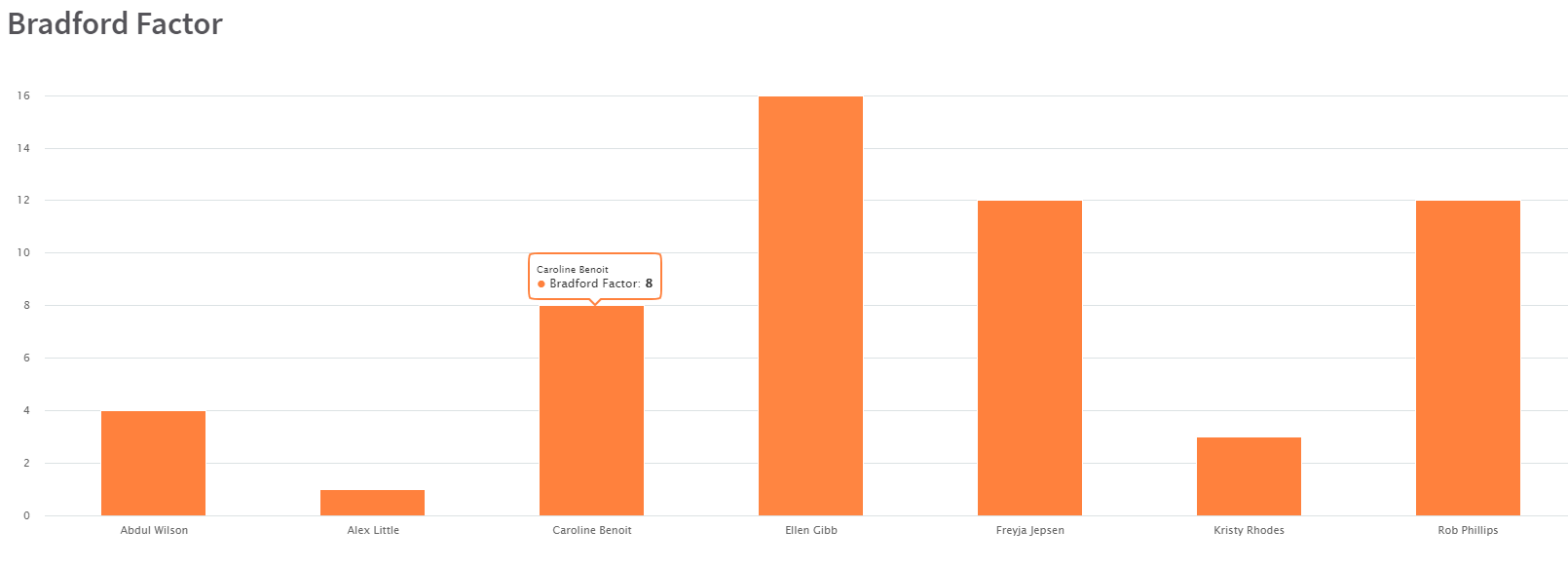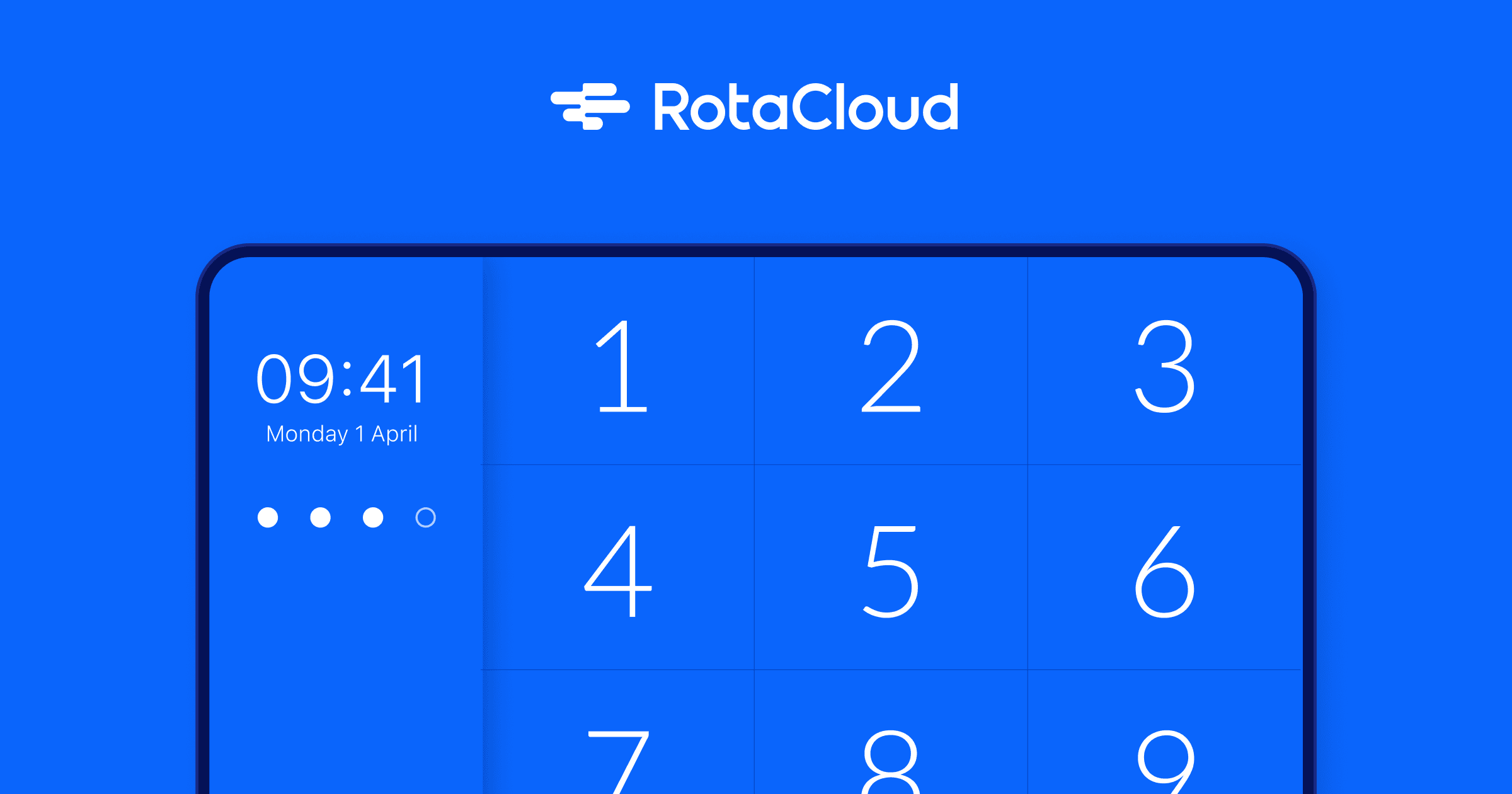Business owners and HR managers are always looking for ways to boost efficiency while making sure that their staff are treated fairly.
On paper, the Bradford Factor appears to do just that, allowing managers to calculate a score for each of their staff and determine how their use of sick days might be impacting the company.
But how exactly is a Bradford Factor score calculated? And is it even legal to use a formula as a basis for evaluating, or even dismissing, staff?
Today, we’re exploring these issues and more, bringing together the most frequently asked questions about the Bradford Factor and offering up some helpful tips for HR managers and small business owners alike.
What is the Bradford Factor?
Why is it called the Bradford Factor?
How do I calculate a Bradford Factor score?
What is a “bad” Bradford Factor score?
Are frequent absences really more damaging than longer ones?
Is it legal to use the Bradford Factor as a basis for dismissal?
Why is the Bradford Factor controversial?
Should I use the Bradford Factor system for my business?
Tips for using the Bradford Factor effectively
The Bradford Factor in RotaCloud
More FAQs
What is the Bradford Factor?
The Bradford Factor is a method of determining the impact of staff absenteeism based on the theory that frequent bouts of short, unplanned absences have drastically more impact on a business than longer absences.
Why is it called the Bradford Factor?
It’s thought that the Bradford formula is a result of research carried out by a team at Bradford University School of Management, but no professional body or person explicitly lays claim to the term.
The Bradford Factor is sometimes referred to as the Bradford score, Bradford scale, Bradford formula or Bradford Index.
How do I calculate a Bradford Factor score?
While short-term absences may not seem disruptive, an employee's Bradford sickness score will be higher for frequent short-term sicknesses compared to long-term absences.
Rather than just tallying up the number of days an employee has called in sick, the Bradford Factor multiplies the number of instances, or “spells”, of unplanned absence by the total number of days taken off work. A sickness calculator would help...
Try our Bradford Factor score calculator:
The Bradford Factor formula itself is: S² x D = B.
This means that the number of spells of absence (S) is multiplied by itself, with that number then multiplied by the total number of days a person was absent (D) during a 52-week period.
For example:
If Jeff calls in sick six times (S = 6), taking two days off on one occasion and one day on each of the other five (therefore D = 7), then his Bradford Factor score would be 252 (because 6 x 6 x 7 = 252).
If Amelia has only two spells of absence in the same year but takes more days off (three days on one occasion and six days on the second), then her Bradford Factor score would be 36 (2 x 2 x 9 = 36).
According to the theory, even though Amy took two more days off than Jeff, her Bradford scale is significantly lower than Jeff's (36 versus 252) because her absences were less frequent.
What is a “bad” Bradford Factor score?
Bradford scoring and its Factor trigger points are completely flexible and vary from company to company, so it’s hard to identify a “good” or “bad” score. However, the idea is the higher the points the worse the score.
An example of possible Bradford trigger points could be as follows:
0–50 points: No action is taken
51–124 points: Issue a verbal warning
125–399 points: Issue a written warning
400–649 points: Issue a final written warning.
650+ points: The employee is dismissed.
Returning to the above example, Jeff (who was absent on six separate occasions and had a Bradford index of 252) would be given a written warning about his absenteeism if judged on this Bradford system.
Are frequent absences really more damaging for a business than longer ones?
Whatever your opinion of the formula itself, the thinking behind the Bradford Factor — that frequent short absences are more detrimental to a business than fewer long absences — is fairly sound.
When a member of staff calls in sick, there’s little that a smaller business owner can do besides try to pick up the slack.
This could mean anything from calling your off-duty staff and asking if they can cover the shift at short notice, to taking on the work yourself and hoping that it doesn’t impact your other duties.
But if, for example, a member of kitchen staff suddenly comes down with gastric flu or breaks their arm, then their manager may be able to secure a replacement, knowing that their employee will be out for several days or more.
In truth, the basis on which the Bradford Factor's formula was originally formed is not entirely clear, with no single body laying claim to the theory.
But considering that sickness absence is estimated to cost UK businesses almost £16 billion a year, it’s not surprising that so many employers will consider using the Bradford Factor as a means of identifying the kind of absences that are the most financially draining.
Is it legal to use the Bradford Factor as a basis for dismissal?
Providing that a company sets trigger points that are realistic, it’s entirely legal for managers to use Bradford Factor scores as a basis for taking action against employees who are frequently absent.
A word of warning, however: some disabilities and illnesses may prevent a person from coming to work on occasion, thus negatively skewing their Bradford Factor score. To dismiss an such an employee would be hugely unfair, not to mention in violation of the Equality Act 2010.
Why is the Bradford Factor controversial?
The Bradford Factor is sometimes considered controversial because it's often used as an inflexible disciplinary tool without taking into account an employee’s unique circumstances, such as chronic illnesses or disabilities, as mentioned above.
As well as not taking into account individual circumstances, it also doesn’t take into account the circumstances of the business or team. For example, in some sectors, frequent short absences may be far less disruptive than less frequent longer absences — the Bradford score’s ‘one-size-fits-all’ approach is a benefit, but also a problem.
The formula also raises the wider problem of discouraging staff from taking sick leave so that they avoid disciplinary action. Employees with contagious illnesses will pass on their ailment to other staff, further increasing disruption — but if a poorly employee knows that taking another sick day will lead to a formal warning, they’ll probably come to work to avoid that. The ongoing pandemic only makes this problem more pressing.
Should I use the Bradford Factor system for my business?
Before deciding whether or not to make the Bradford Factor a part of your management strategy, it’s important to be aware of both its pros and cons.
Pros:
- Having a clear scale on which all staff are measured is fairer than leaving decisions about how to respond to absenteeism to the discretion of one person.
- Gives both managers and employees something concrete to refer to when discussing attendance.
- Bradford Factor trigger points can be tweaked to fit management styles, with less autocratic managers allowing for a higher number of sick days to be taken before issuing warnings.
Cons:
- Flexible trigger points run the risk of becoming entirely arbitrary if not properly thought out, leading to staff being judged unfairly.
- Those who have disabilities or conditions like asthma or epilepsy may feel discriminated against as their conditions can result in occasional bouts of short (but much-needed!) periods of absence.
- Discouraging shorter spells of absence could potentially lead to staff deciding to come in while still ill (presenteeism), bringing things like colds and flu into work and passing them on to the entire team.
Tips for using the Bradford Factor effectively

The Bradford Factor can be hugely helpful for human resource managers, offering them a yardstick by which to compare their entire team and identify staff who could be costing the company hundreds, if not thousands of pounds a year.
By introducing them to the metric, staff usually respond positively, too, seeking to avoid taking too many “sickies” each year and having them affect their score.
But managers should also be wary of letting a one-size-fits-all formula shape their decisions too much.
Rather than firing off a written warning the moment a member of staff’s Bradford Index creeps into the next category, prudent HR managers should see this as an opportunity to meet with their staff to discuss the causes of their repeated absences.
It’s easy to write off occasional days off as staff pulling a fast one — especially if their sick days happen to fall either side of a weekend.
But frequent absence can be a sign that something isn't quite right. There are plenty of legitimate, serious, reasons why a member of your team might be calling in sick so often, such as:
- Stress and anxiety
- Depression
- Illness in the family
- Bullying in the workplace
- Acute physical illnesses that flare up only occasionally
- Lack of engagement with their work
Although they're sometimes reserved for longer periods of absence, it’s a good idea to have a back-to-work scheme in place and to follow it even when a member of staff takes just a day or two off.
The Bradford Factor might be great for businesses that value efficiency before all else, but numbers alone won’t tell you whether someone is having trouble at home, or indeed if they are unhappy in their job and need your help.
You could simply dismiss staff who have high Bradford Factor scores, ensuring that only those who score well remain in the company. But even the most results-focused, data-driven business moguls will agree that replacing a member of staff will usually end up costing the company far more than ensuring that those in your existing team are motivated and happy at work.
Metrics like the Bradford Factor can be useful for managers, but it's best to use them to help you spot issues that need your attention rather than letting them make the decisions for you.
The Bradford Factor in RotaCloud
You can use your RotaCloud absence data to create Bradford Factor reports. Here’s how to do it:
#1 Add sickness and other absence via the Leave section, or employee timesheets where applicable.
#2 Under Reports → Time & Attendance, select Bradford Factor.
#3 Choose a date range and the employees the report will cover. The report will update automatically when settings are changed.

#4 Review the graph and the full data table below it.


More FAQs
Skip to:
What is a high Bradford score?
What is an acceptable Bradford score?
Read next ➤

Absence management: a complete guide for SMEs
From types of absences to best practices, your absence management policies need to strike the right balance between deterring false sickness absences and making sure your staff take absences when they need them. How can you get that balance just right?
What is a high Bradford score?
Depending on the business and its Bradford Factor scale, a Bradford score over 100 could simply be a cause for concern while other employers may begin to take action with monitoring or investigating.
Over 200 is considered, on average, a high enough Bradford Factor score for further investigation - and often warnings.
A Bradford score above 500 can often be grounds for dismissal, depending on the employee's or company's circumstances.
What is an acceptable Bradford score?
Anything below 50 is considered a good Bradford score and is typical for the average employee. A Bradford sickness score between 50 and 100 can also be acceptable but may be a cause for concern, depending on the company and its Bradford scale. Anything higher will
What are Bradford Factor trigger points?
Bradford Factor trigger points mark the thresholds an employee's Bradford score can reach for certain actions to take place.
Trigger points vary and are flexible from business to business. But here's an example:
No action is taken if an employee's Bradford score is below 50 points, while points between 50 and 100 mark the trigger point for basic monitoring. Bradford points over 200, however, may trigger an investigation.
When does a Bradford score reset?
The Bradford Factor score often resets annually, most commonly at the start of the calendar or financial year - depending on the company.
Editor's Note: This article was originally published in February 2017 and most recently updated in February 2025.



